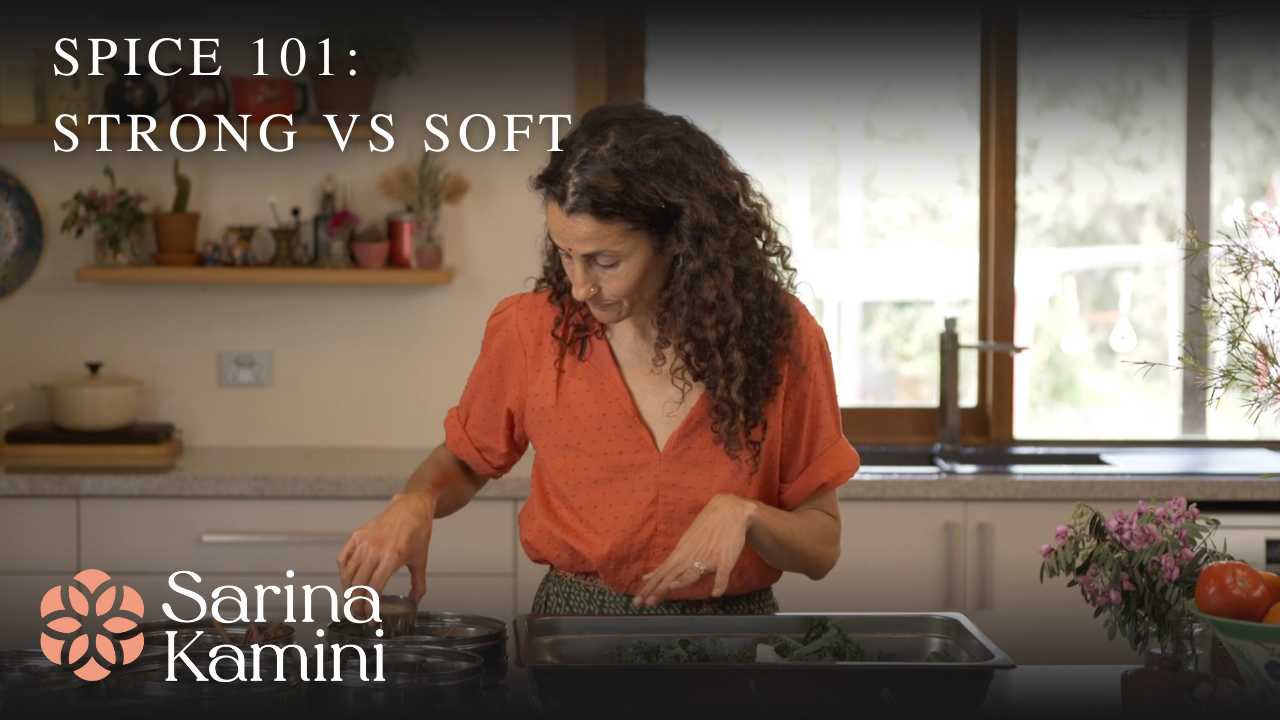STRONG VS SOFT SPICE
STRONG VS SOFT SPICE

Most of my students tend to think that more equals more with spicing and flavour. And yet that’s mot really the case. It seems counter intuitive, but punchier spice flavour is attained by using less spice. Very complex masala blends tend to eat as subtle, complex, soft and nurturing. The reason for this contradiction has to do with spice resonance. Each spice has a tonality, or a particular sound scale. Imagine spice resonance like the ripples made when a stone is thrown in a pond: throw one stone in, and the ripples will spread out to the edge of the shore. But throw multiple stones in the water, and the spread of ripples from each stone works to contain the others. The ripples shorten. Spices work the same way. With fewer spices in the pan each will extend its expression further, resulting in “louder” flavours. More spices in a blend means more competition for space, which means the flavour resonance of each spice is cut a little shorter and plays out a little quieter. This is what I call “conversational” spicing, and it is very much at the heart of Kashmiri cooking. But for me there’s always a place for both. It just comes down to knowing what you want to eat, when.
STRONG VS SOFT SPICING:
Stronger spicing is my go to for fried foods (pakoras, for example) in order to punch through the weight of oil and flours. Try the combination of white salt, ground fenugreek, a hot chilli, fresh ginger or lemongrass, and a pungent earth spice - ajwain or cumin seed.
Soft spicing works well for introducing children to more complex flavours. Try fine pink salt, ground thermic, ground coriander, ground ginger, ground cinnamon, cinnamon quills, cumin seed, ground cumin, jaggery, and Kashmiri chilli together in a pan for a very gentle end result.
Stronger spicing is better suited to cooking in hot oils: wok-style fries need fresh spices (ginger, onion and garlic) cut in larger pieces to minimise burning, and are well matched with strong salts, hot chillies and very savoury Asian sauces.
Lamb is a meat particularly suited to softer, more complex spicing. For spiced lamb dishes, use a combination of whole spice (bay leaf, black cardamom, clove, star anise) with the ground and dried spicing listed out in the second paragraph (above) to make a very intricate dish that the whole family will enjoy.
When making a strong dish with fewer spices, stick to punchier aromatics. They will have more impact.
